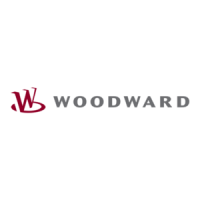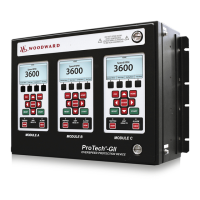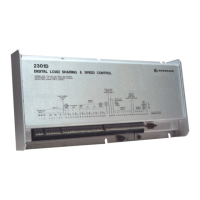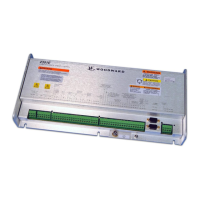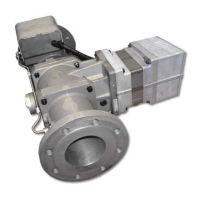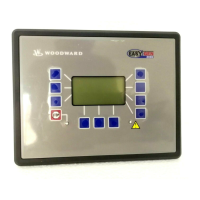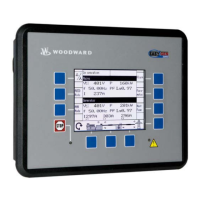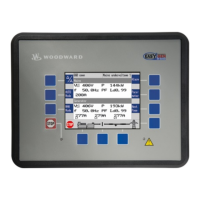Manual 37365A GCP-30 Series Packages - Genset Control
© Woodward Page 163/179
CAN Bus Structure
≡≡≡≡≡≡≡≡≡≡≡≡≡≡≡≡≡≡≡≡≡≡≡≡≡
Transmission Telegram
The data of the following table can be handled by a Gateway GW 4 or a PLC and can be transferred to other
communication busses. A GCP is sending the data via circular CAN messages.
The transmitting rate of this communication is 125 kBaud.
The CAN ID, on which the GCP is sending, is calculated as follows:
CAN ID = 800 + item/generator number (or 320 + ID/generator number)
(The ID number, Parameter 4, is adjustable and influences the CAN ID directly on which the item sends the vi-
sualization m
essage).
A visualization message, which is sent out of a GCP, has 8 Bytes and is assembled as follows:
Byte 0 Byte 1 Byte 2 Byte 3 Byte 4 Byte 5 Byte 6 Byte 7
H‘DD MUX num-
ber
data word 1
High-Byte
data word 1
Low Byte
data word 2
High-Byte
data word 2
Low Byte
data word 3
High-Byte
data word 3
Low Byte
In a visualization message the byte 0 is always used to show the hexadecimal value DD. This one defines the
message as a visualization message. As the complete transmission telegram of the GCP includes more than three
words byte 1 sends an additional MUX number starting with 0. Therefore it is theoretically possible to send
(256 × 3 = 768) words via the CAN ID. The whole telegram is built up as follows:
Line 1: MUX number 0, word 1
Line 2: MUX number 0, word 2
Line 3: MUX number 0, word 3
Line 4: MUX number 1, word 1
Line 5: MUX number 1, word 2
Line 6: MUX number 1, word 3
.
.
Line (n): MUX number (n-1/3), word 1
Line (n+1): MUX number (n-1/2), word 2
Line (n+2): MUX number (n-1/1), word 3
n depends on the total length of the item special telegram and cannot be larger than H’FF.
Current Direction Message
The current direction can be recognized via the prefix of the power. A positive transmitted value indicates ex-
ported power (power supplied to the mains, supply) and a negative transmitted value indicates imported power
(power supplied by the mains, consumption).

